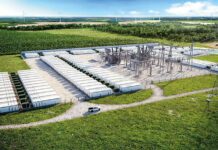The Government of Canada has released its mandate letters for ministries throughout the federal government, including the Ministry of Infrastructure and Communities.
The letter outlines the key priorities for each ministry, and what is expected of that ministry during the course of the government mandate.
For infrastructure, there is a laundry list of key priorities and new initiatives sent out in the letter from Prime Minister Justin Trudeau.
“I will expect you to work with your colleagues and through established legislative, regulatory and Cabinet processes to deliver on your top priorities. In particular, you will:
- Continue to work with other Members of Parliament to implement the Investing in Canada Plan. Your focus must be on the successful, timely delivery of our growth-generating investments in public transit, green infrastructure and social infrastructure, as well as key strategic infrastructure that will increase trade. The key objectives of this plan are increasing economic growth and creating good middle class jobs with infrastructure that improves people’s quality of life.
- Require that all provinces and territories identify and approve all of their long-term infrastructure priorities within the next two years and according to the signed bilateral agreements. Funds that are not designated for specific approved projects by the end of 2021 will be reinvested directly in communities through a top up of the federal Gas Tax Fund.
- Create a National Infrastructure Fund to seek out and support major nation-building projects that will benefit people across various regions, connect our country and improve quality of life. This should start by supporting the Newfoundland-Labrador fixed transportation link.
- Finalize the creation of an additional infrastructure fund by 2020-2021 to support priority projects and economic diversification for communities transitioning from fossil fuels.
- Make the federal commitment to fund public transit permanent and rise with the cost of construction over time. Ensure that new federal investments in public transit are used to support zero-emission buses and rail systems starting in 2023 and work with municipalities to address any exceptional circumstances.
- Work with provinces and territories to introduce new funding to help school boards and municipalities purchase 5,000 zero-emission school and transit buses over the next five years.
- Launch a new call for proposals under the Disaster Mitigation and Adaptation Fund to address the impacts of climate change, adjusting the program as required to ensure that the most impactful projects are supported, including those related to natural infrastructure, whether they are from small, rural and Indigenous communities or large urban centres.
- Ensure that Canadians have access to accurate and timely information about infrastructure investments in their communities, and work with your Cabinet colleagues to improve financial reporting to Canadians and the Parliamentary Budget Officer.
- You are the Minister responsible for the arm’s-length Canada Infrastructure Bank, now fully operational. With the support of the Minister of Finance, ensure the Bank has the support it needs for its core purpose of attracting private sector and institutional investment to expand the scope of public infrastructure investment in Canada, in line with the Government’s public policy objectives. In particular:
- With the Minister for Women and Gender Equality and Rural Economic Development, and with the support of the Minister of Innovation, Science and Industry and the Minister of Canadian Heritage, work with the Bank to deliver high-speed internet to 100 per cent of Canadian homes and businesses by 2030.
- Move forward with a Clean Power Fund, sourced through the Canada Infrastructure Bank, to help finance the development and linking of clean energy to transmission systems and to support the transition of northern, remote and Indigenous communities from reliance on diesel-fueled power to clean, renewable and reliable energy. The Clean Power Fund will contribute to the achievement of Canada’s climate goals, helping move more electricity between provinces and regions and supporting the electrification of Canadian industries.
- Continue progress on priority bridges: completing the toll-free replacement for the Champlain Bridge; working with the Minister of Transport, the Canadian National Railway Company and the Government of Québec to begin the rehabilitation of the Pont de Québec; and supporting the Windsor-Detroit Bridge Authority as it advances the construction of the Gordie Howe International Bridge.
- Work with the Minister of Indigenous Services to co-develop and invest in distinctions-based community infrastructure plans, and move forward with addressing critical needs including housing, all-weather roads, high-speed internet, health facilities, treatment centres and schools in First Nations, Inuit and Métis communities by 2030. These plans should also include new investments to support the operation and maintenance of this infrastructure.
- Work with the Federation of Canadian Municipalities through the Green Municipal Fund, the Municipalities for Climate Innovation Program and the Municipal Asset Management Program to build climate resilience, reduce greenhouse gas emissions, make better decisions, and monitor investments and ensure they reduce emissions from residential, commercial and multi-unit buildings.
- Work with international partners to share best practices around the leveraging of infrastructure to contribute to innovation, resilience and a low-carbon future, supporting the creation of Canadian jobs and attracting infrastructure investment into Canada.
- Support the Minister of Transport, in his capacity as Minister responsible for VIA Rail, to create high frequency rail for the Toronto-Quebec City corridor.
- Support the Minister of Transport to invest in Canada’s trade corridors to increase global market access for Canadian goods.
- Support the Minister of Families, Children and Social Development to finalize the design and implementation of the Housing Supply Challenge. The design should include a detailed outreach plan to municipalities, which are the main stakeholders targeted by the challenge.
These priorities draw heavily from our election platform commitments. As mentioned, you are encouraged to seek opportunities to work across Parliament in the fulfillment of these commitments and to identify additional priorities.”















